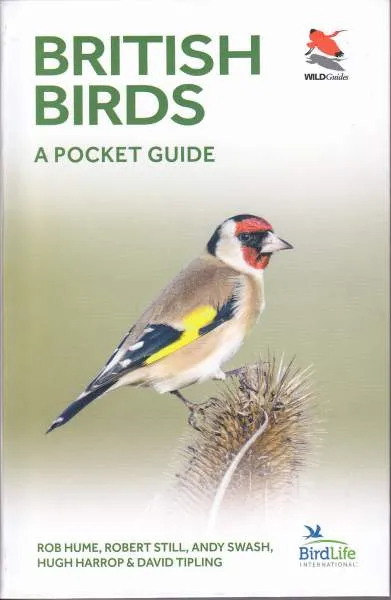
Throughout my birding life I have never been a fan of photographic guides. The images in most of these early guides were of poor quality and often only featured one or two plumages per species. Back in 2016 that changed after seeing a copy of the WILDGuides' Britain's Birds: An Identification Guide to the Birds of Britain and Ireland in the accommodation I was renting on Shetland.
This book was packed with high-quality photos by various photographers, including Hugh Harrop and David Tipling, and each species had a whole suite of photos showing the various ages and plumages. The book was also full of useful identification snippets and side-by-side comparisons of similar species. I purchased a copy as soon as I returned home, but it is best treated as a reference book rather than a field guide due to its size.
That has all changed with the publication of the new British Birds: A Pocket Guide which, as its title suggests, is designed to be taken into the field. As you would expect there is some trimming down to be done to make it a pocket edition. Whereas the original book covered all those species that have occurred in the UK (600 species) this book only covers the most regularly occurring species, 248 in all, plus 45 scarcer species.
The book still manages to include over 1,600 photos, all of which are of a high quality. It starts with a guide to using the book and is followed by a section on bird topography, identification and finally birds by habitat. Once into the main body of the book each species has at least one photograph accompanied by a short amount of text detailing size, identification features, voice and a distribution map.
Those species that have a range of plumages or age groups such as wildfowl, gulls and waders, are assigned more photographs to show the different plumages states. As in the original book this guide is full of nuggets of information such as showing the difference in tertial patterning in juveniles of the larger gulls and makes identification that much easier.
Similar species, such as Curlew and Whimbrel, are often depicted next to each other and in similar postures with the identification features useful in separation highlighted for each species. For some family groups there are also additional comparison pages that show a number of species in that family side by side and how they can be identified. The page for Calidris waders showing both winter and summer plumage, and the two pages detailing the four main age groups of the larger gulls will no doubt prove most helpful for those who struggle with these groups.
In all this is a fantastic piece of work. It continues the spirit of the first book and manages to cram a huge amount of information in the pages without it feeling too cluttered or overwhelming. The text is concise but thorough enough to help with identification. Priced at £9.99, this is a must have for new and seasoned birders alike.
Reviewed by
- Author: Rob Hume, Robert Still, Andy Swash, Hugh Harrop & David Tipling
- Publisher: Princeton University Press, Princeton (NJ) & Oxford
- Publication year: 2019
- ISBN: 9780691181677
- Format: Paperback
- Page count: 272
- RRP: £10.00
- Available from: NHBS